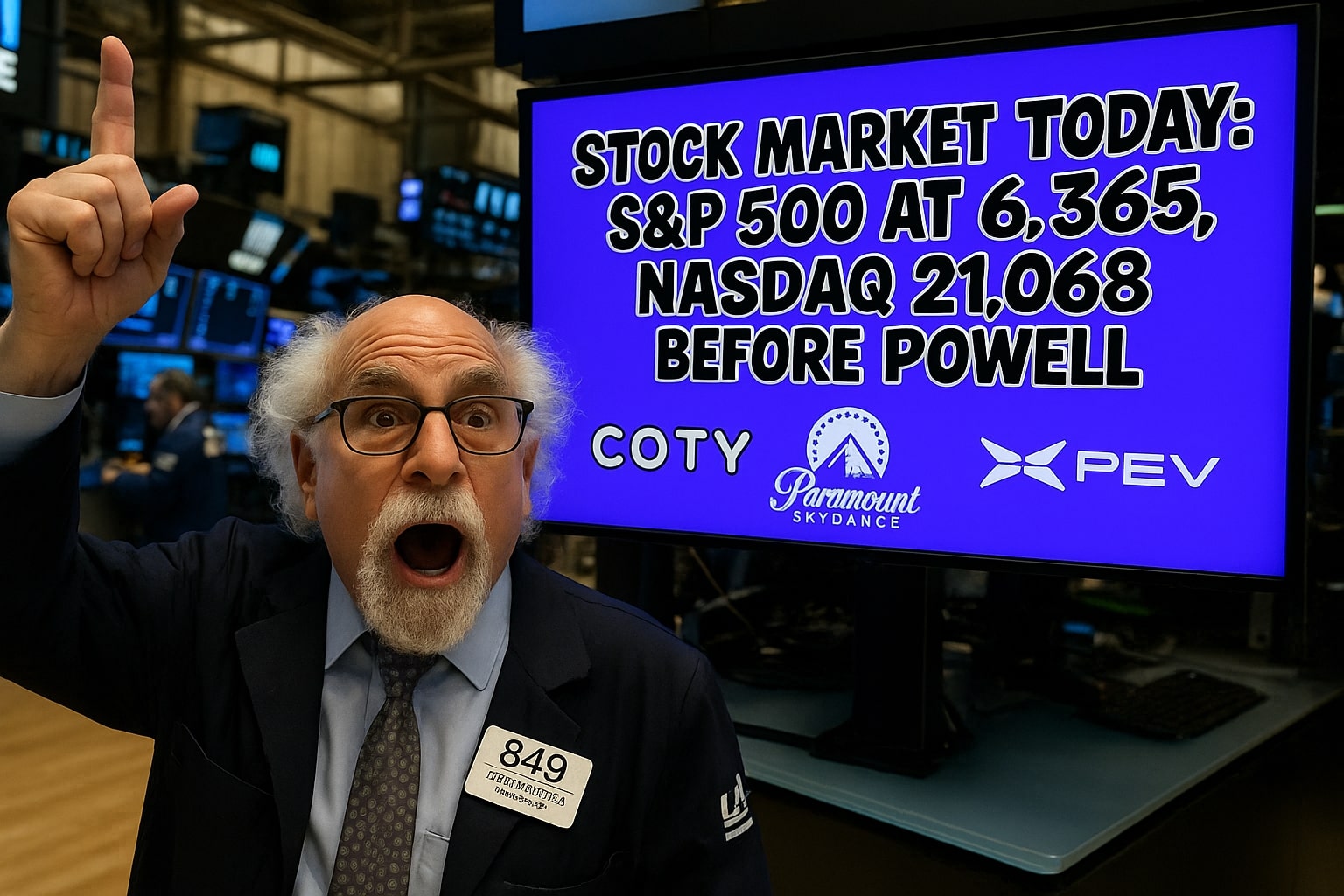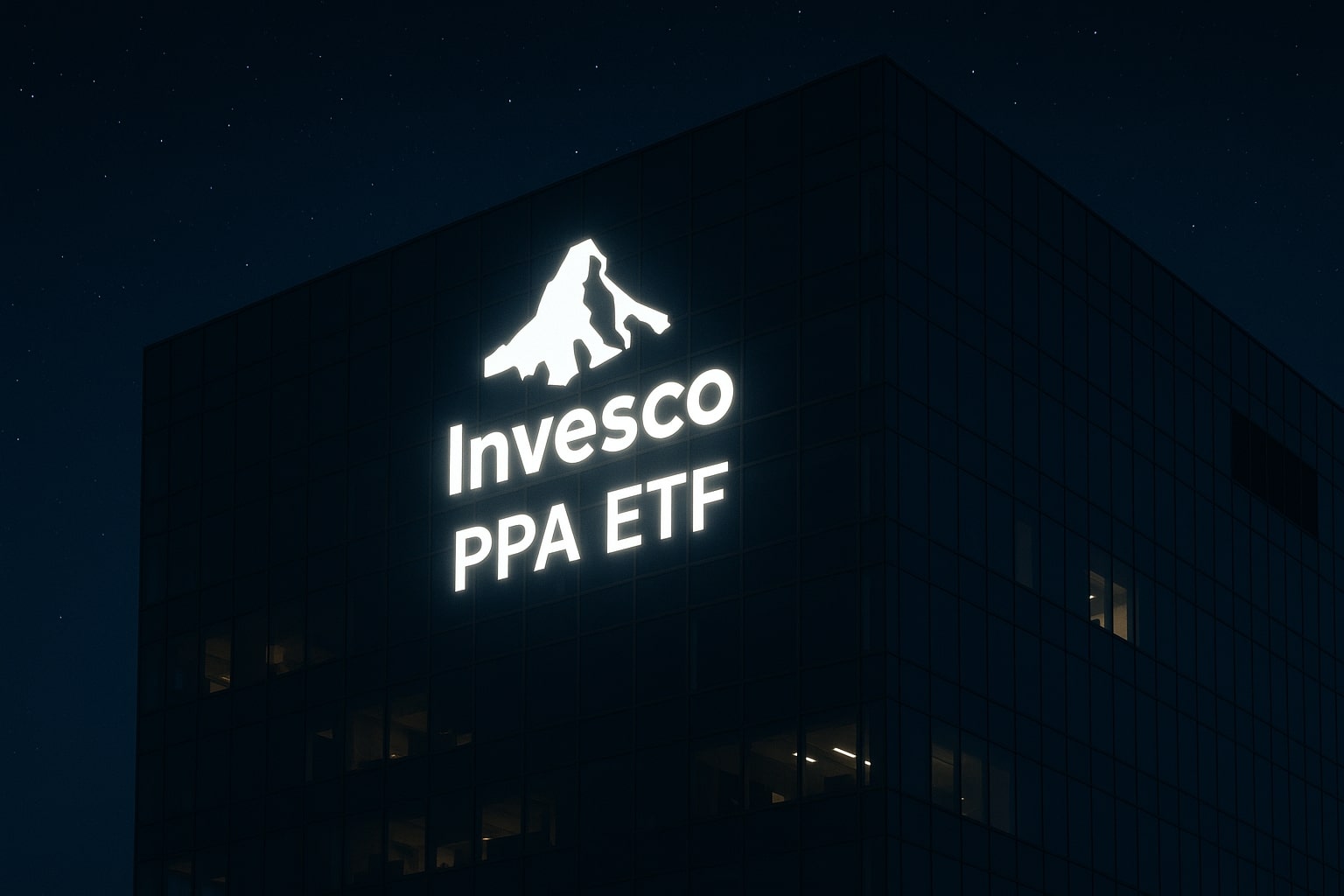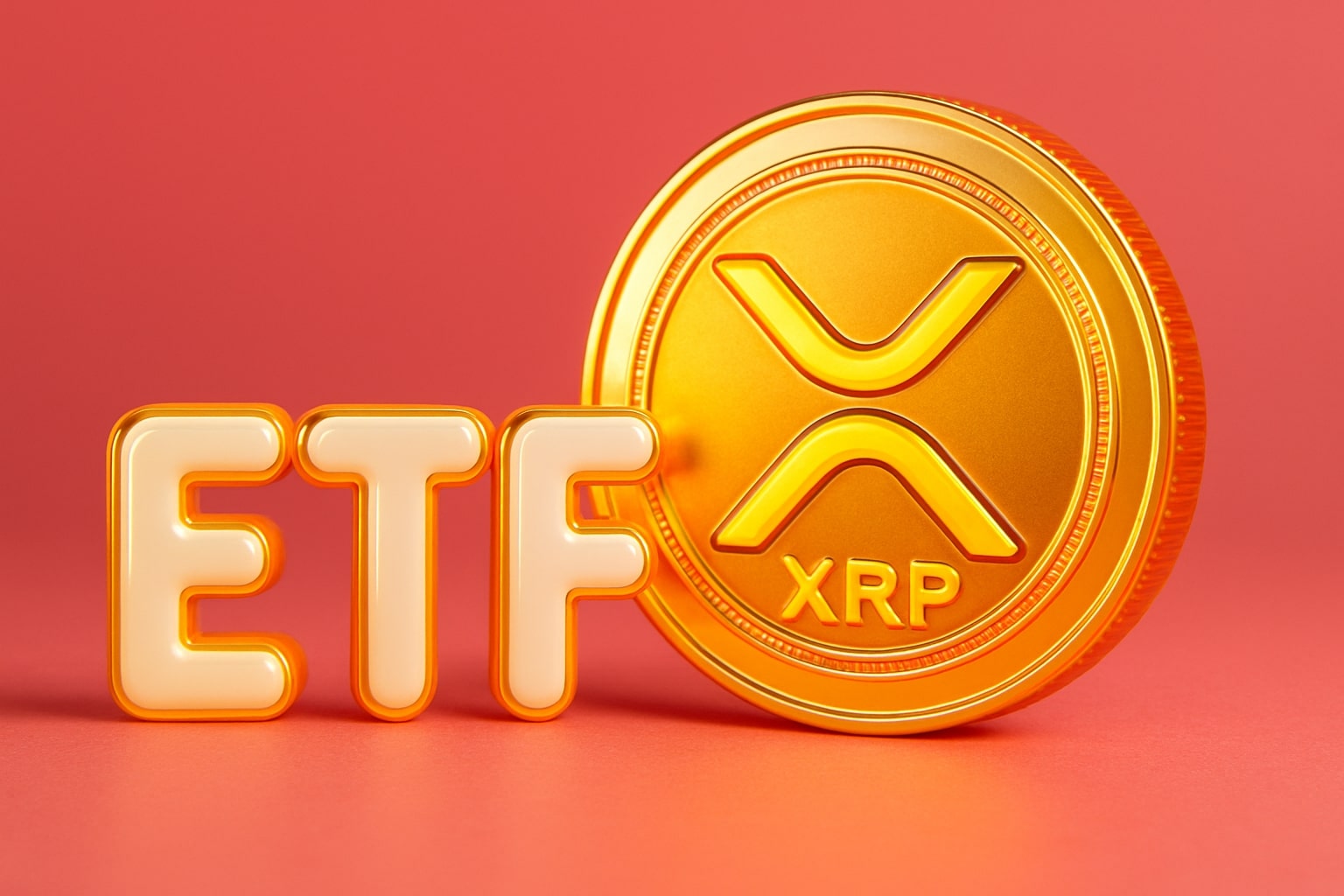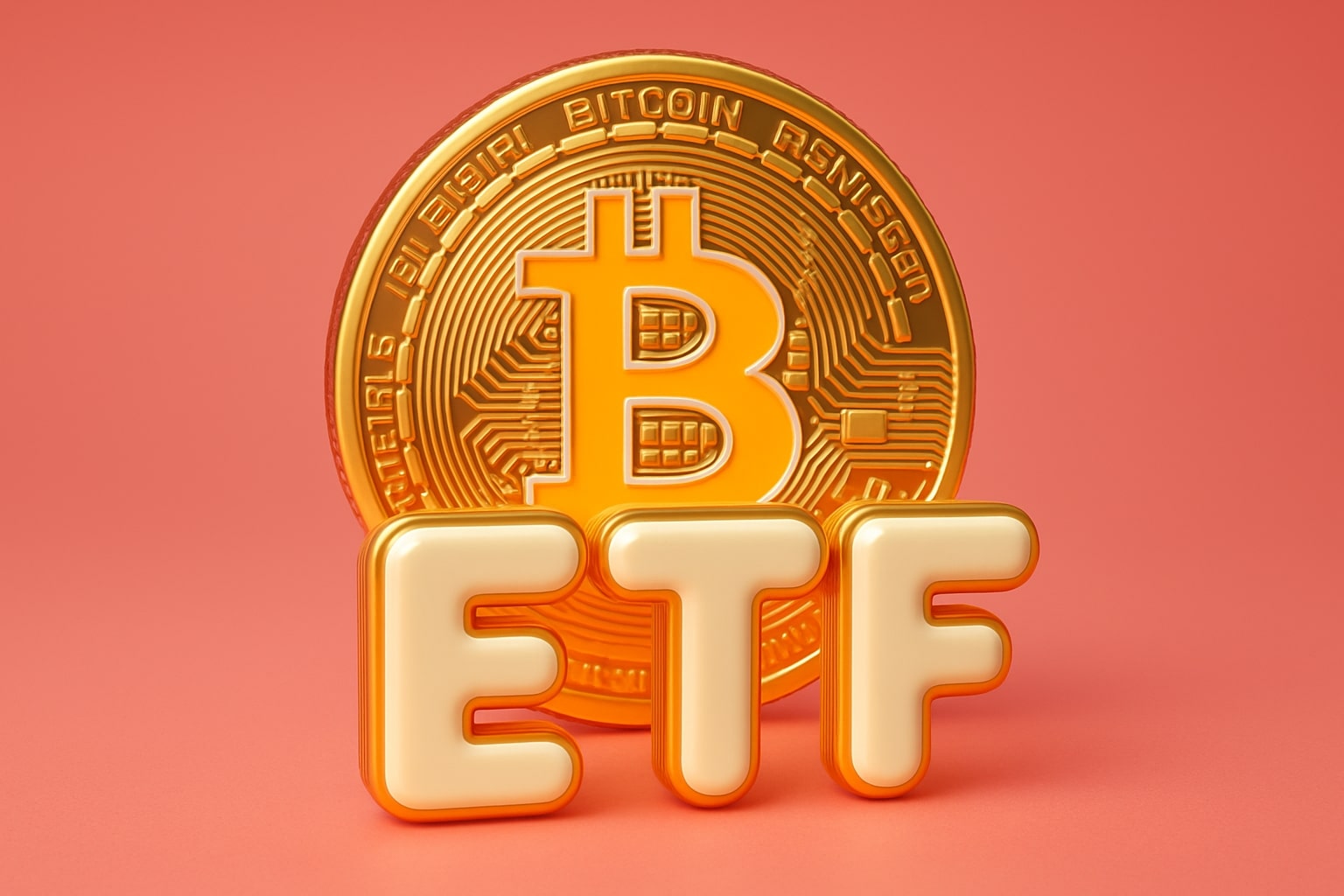
Stock Market Today: S&P 500 at 6,365 and Nasdaq at 21,068 Await Powell
ETF outflows of $2.1B signal caution as Dow, S&P, and Nasdaq fall ahead of Powell’s Jackson Hole remarks on rate cuts | That's TradingNEWS
Nasdaq Composite (COMP) and S&P 500 (SPX) Under Pressure
The Nasdaq Composite (COMP) closed near 21,068.66, down 0.49%, extending its weekly loss to more than 2%. A heavy rotation out of mega-cap tech names including NVIDIA (NVDA -0.14%), Meta Platforms (META -1.2%), and Palantir (PLTR -2.1%) has dragged sentiment lower. Meanwhile, the S&P 500 (SPX) slid to 6,364.92, down 30.86 points (-0.48%), recording its fifth consecutive daily decline, the longest losing streak since January. The correction comes just days after the S&P touched a record high of 6,468.54 on August 14, leaving the index only 1.3% off its peak. Elevated valuations—trading at more than 21x forward earnings—are colliding with profit-taking as traders brace for Friday’s Jackson Hole address by Fed Chair Jerome Powell.
Dow Jones Industrial Average (DJIA) Led Lower by Walmart (WMT)
The Dow Jones Industrial Average (DJIA) slipped 225 points (-0.50%) to 44,713.22, weighed down by Walmart (WMT $97.59, -4.85%). The retail giant posted quarterly revenue above expectations at $164.1 billion, but earnings of $0.68 per share missed the $0.74 consensus. It was Walmart’s first EPS miss since 2022, and the CEO warned tariffs will weigh on second-half results. This spooked investors already worried about consumer resilience. The retailer still raised full-year sales guidance, but the market focused on shrinking margins and cost pressures. Walmart’s move erased nearly $40 billion in market cap in a single session, making it the biggest drag on the Dow.
Federal Reserve Policy and Powell’s Jackson Hole Test
Fed funds futures now assign a 79% probability of a September rate cut, according to CME’s FedWatch, but investors want Powell’s confirmation. Minutes from July showed divisions inside the FOMC: Governors Christopher Waller and Michelle Bowman dissented against holding rates steady, the first dual dissent since 1993. Initial jobless claims rose to 235,000, the highest since June, while continuing claims reached 1.97 million, suggesting labor market cooling. Meanwhile, the Philadelphia Fed manufacturing index collapsed to -0.3 from 15.9, pointing to weakening factory momentum. These data points increase pressure on Powell, but if he refrains from signaling an imminent cut, markets could extend their selloff.
Coty (COTY), Paramount Skydance (PARA), and Xpeng (XPEV) Among Stock Movers
Coty (COTY $8.12, -20.5%) plunged after reporting a quarterly loss of -$0.05 per share, far worse than the expected +$0.02. While revenue of $1.25 billion exceeded estimates, guidance for fiscal 2026 H1 disappointed, with management citing tariff headwinds. By contrast, Paramount Skydance (PARA $19.34, +15%) surged as its streaming unit posted unexpected profitability. The stock is up 25% month-to-date on optimism around restructuring efforts. Chinese EV maker Xpeng (XPEV $24.10, +14%) jumped after CEO Xiaopeng He purchased 3.1 million Class A shares through Galaxy Dynasty Limited. The insider purchase, worth over $70 million, underscored confidence in Xpeng’s strategy following better-than-expected Q2 revenue.
Global Indices: Asia-Pacific and Europe React to Tariff Headlines
Asian equities diverged from Wall Street. Australia’s S&P/ASX 200 surged 1.13% to 9,019, its first close above 9,000, led by OMG Group (+114%) and battery producer Janus Electric (+46%). Japan’s Nikkei 225 fell for the third straight day, closing at 42,610.17 (-0.65%), pressured by Daiichi Sankyo (4568.T -2.1%) and chipmaker Lasertec (6920.T -3.4%). Meanwhile, Europe showed resilience: the Eurozone PMI rose to a 15-month high of 55.4, signaling expansion despite tariffs. The U.S.-EU trade pact confirmed a 27.5% tariff on autos, while goods like pharmaceuticals and aircraft parts were spared. Yields climbed in response, with the U.S. 10-year Treasury at 4.346% and Germany’s Bund yield at 2.72%, the highest since 2011.
Sector and Volatility Trends in U.S. Equities
The KBW Nasdaq Bank Index (BKX) fell 0.58% to 143.18, reflecting pressure on financials as higher tariffs stoke inflation fears. Tech remains the most volatile sector: the Cboe Volatility Index (VIX) spiked 5.54% to 16.56, indicating hedging demand into Powell’s speech. Energy, meanwhile, bucked the decline. WTI crude (CL=F) traded at $63.30 (+0.14%) and Brent held above $66, supported by falling U.S. inventories. Gold (GC=F) remained stable at $3,386/oz, consolidating near record highs, while Bitcoin (BTCUSD $112,808, -1.29%) sold off sharply, marking its lowest level in two weeks.
ETF Flows and Fund Positioning
ETF flow data showed sharp contrasts. Tech-focused ETFs saw net outflows of nearly $2.1 billion this week as investors pulled capital ahead of Powell’s speech, reflecting defensive repositioning. Meanwhile, dividend and low-volatility ETFs attracted fresh inflows, with $1.3 billion entering defensive equity products. Bond ETFs also drew strong demand, with more than $5.6 billion added, signaling that institutions are hedging equity downside with Treasuries despite elevated yields. This flow pattern reflects tactical caution: equity investors are trimming exposure to growth-heavy Nasdaq funds while reallocating toward income and stability.
Strategic Outlook for Indices
With Dow (DJIA 44,713), S&P 500 (SPX 6,365), and Nasdaq (COMP 21,068) all trending lower into Powell’s speech, markets are balanced on a knife edge. Upside depends on Powell’s tone—if he acknowledges labor softening and tariff-driven inflation risks, a September rate cut becomes more likely, sparking a rebound. But if Powell holds firm and signals patience, equities could face another leg lower, with Nasdaq’s growth-heavy composition particularly exposed.
That's TradingNEWS
Read More
-
PPA ETF at $154: Can This Defense ETF Keep Beating ITA and SPY?
14.12.2025 · TradingNEWS ArchiveStocks
-
XRP ETFs XRPI and XRPR Pull In $975M While XRP-USD Fights To Hold $2
14.12.2025 · TradingNEWS ArchiveCrypto
-
Natural Gas Price Forecast: NG=F Hits $4.11 As Warm Winter Outlook Puts $3.913 Support At Risk
14.12.2025 · TradingNEWS ArchiveCommodities
-
USD/JPY Price Forecast - Dollar to Yen Can BoJ’s 0.75% Shock Break The 155–158 Range?
14.12.2025 · TradingNEWS ArchiveForex


















